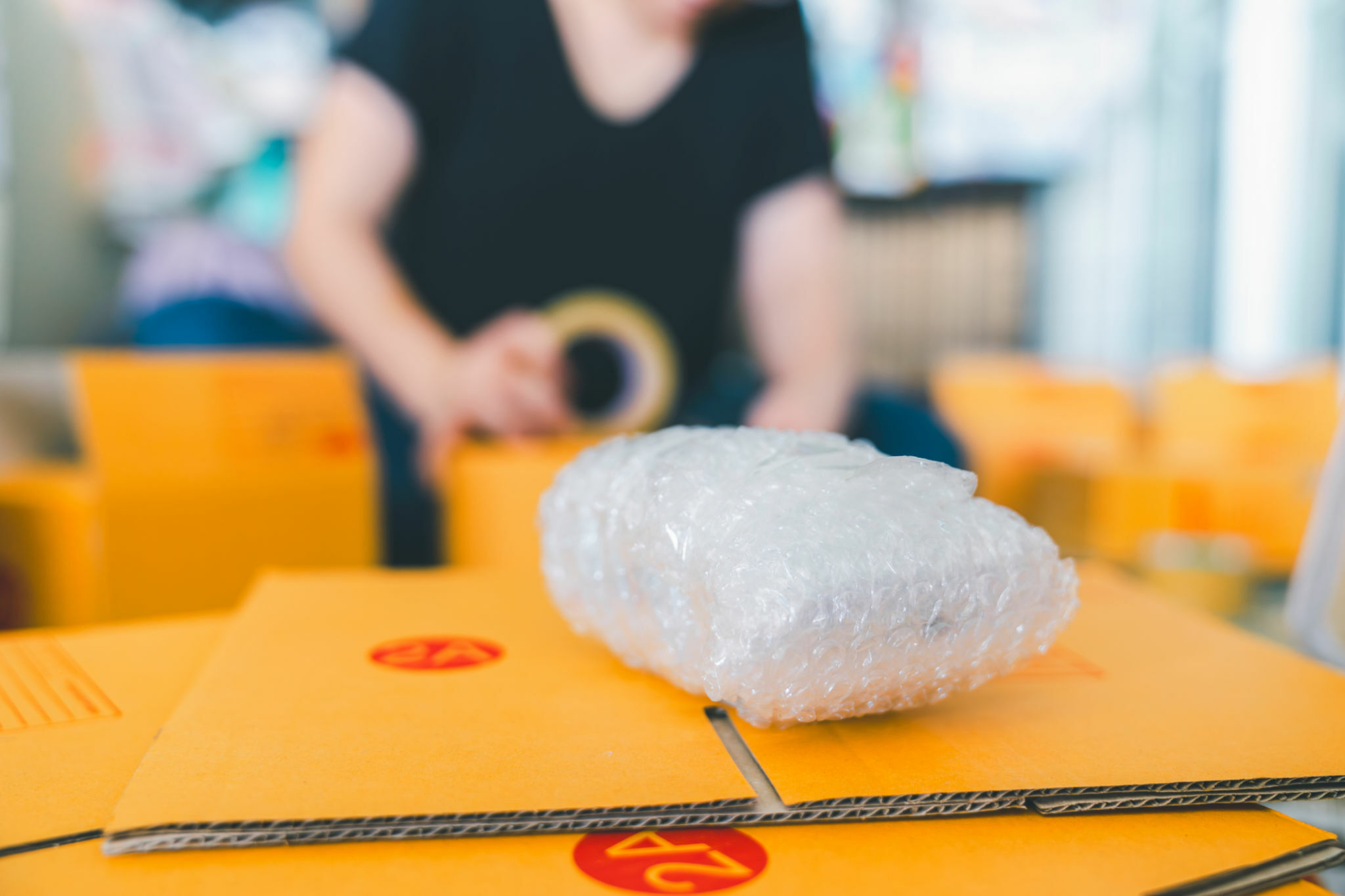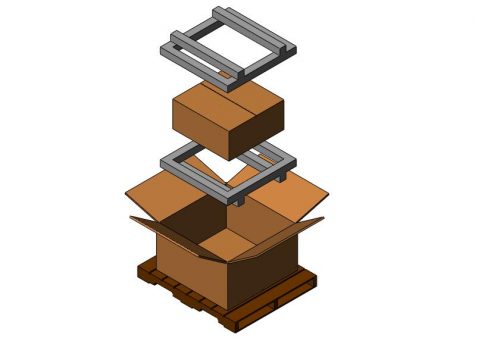Innovative Industrial Packaging Solutions: Elevating Your Products
Wiki Article
Effective Industrial Recycling Solutions for Sustainable Packaging: A Comprehensive Overview
In today's significantly environmentally-conscious globe, the need for sustainable packaging options has never ever been higher. To meet this need, services throughout industries are proactively looking for reliable industrial recycling options. Navigating the complicated landscape of sustainable packaging can be testing without a detailed guide. That's where this extensive guide on efficient industrial recycling remedies for lasting packaging comes in. By checking out key areas such as packaging product selection, developing for recyclability, executing reusing facilities, collaborating with reusing partners, and tracking and determining recycling success, this overview will certainly furnish you with the understanding and tools required to make educated choices and drive positive adjustment within your company. Whether you're a product packaging professional, sustainability manager, or merely interested in the subject, this guide will certainly supply beneficial understandings and approaches to assist you browse the world of sustainable product packaging.Packaging Material Choice
The selection of product packaging materials plays an essential role in guaranteeing the sustainability of industrial recycling solutions. When it involves lasting product packaging, the selection of products is essential in minimizing ecological impact and making the most of reusing effectiveness. Picking the best products can help in reducing waste generation, save resources, and promote a round economy.Products like cardboard, paper, glass, and certain kinds of plastics can be recycled numerous times without losing their quality. On the other hand, materials that are challenging to recycle, such as mixed plastics or non-recyclable compounds, can produce challenges for the reusing process and might end up in incinerators or garbage dumps.
An additional factor to consider is the usage of naturally degradable and renewable materials. Product packaging made from renewable energies, such as plant-based plastics or biopolymers, can help decrease reliance on nonrenewable fuel sources and alleviate climate change. Furthermore, eco-friendly products damage down naturally with time, decreasing the accumulation of waste in land fills.
Moreover, the weight and volume of packaging materials should be reduced to minimize transport prices and power intake. Lightweight products not only require less resources throughout manufacturing but additionally add to lower carbon discharges throughout transport.
Creating for Recyclability
Packaging designers must focus on the use of materials that are widely approved for recycling and have actually developed reusing frameworks. Materials such as glass, light weight aluminum, and certain kinds of plastic, like Family pet and HDPE, are frequently recycled and need to be favored over materials that are pricey or hard to reuse.Another critical factor to consider in making for recyclability is the elimination of unneeded components or materials. By lessening the variety of layers, coatings, and additional elements, product packaging can be made less complex and less complicated to reuse. In addition, designers ought to aim to reduce making use of mixed products, as they can complicate the recycling process.

Implementing Recycling Infrastructure
Effective execution of reusing framework is critical for the success of industrial reusing options. Without appropriate facilities in area, the reusing procedure ends up being inefficient and inadequate, impeding the general goal of lasting product packaging.To execute recycling framework successfully, several essential factors require to be taken into consideration. There should be an efficient collection system that promotes the splitting up and collection of recyclable materials. This can include assigned recycling bins in public rooms, in addition to collaborations with waste management companies for curbside pickup and sorting.
When accumulated, the recyclable materials need to be carried to recycling centers in a timely fashion. This requires efficient logistics and transportation networks, guaranteeing that the products get to the suitable centers right away.
At the reusing facilities, advanced sorting and handling technologies must remain in area to divide various sorts of products efficiently. This consists of making use of automated sorting machines, optical scanners, and manual sorting strategies.
In addition, there must be a durable market need for recycled products. This can be attained with collaborations with producers and sectors that utilize recycled products in their manufacturing processes. Producing a secure market for recycled materials incentivizes the recycling sector and advertises the round economy.
Working Together With Recycling Partners

One trick facet of teaming up with recycling companions is the establishment of clear interaction networks. It is crucial to establish open lines of interaction to promote the exchange of info, updates, and comments. This enables both events to remain notified regarding the progress of reusing efforts and address any kind of difficulties or problems that may occur.
Additionally, partnership can include collaborations in applying and making recycling programs. Recycling partners can give important understandings and advice in establishing efficient collection systems and identifying one of the most appropriate recycling modern processing company technologies. By collaborating, services and reusing companions can maximize the reusing procedure and reduce waste.
Moreover, collaboration can extend beyond the operational elements of reusing. It can also encompass campaigning for and education campaigns. By joining forces, businesses and reusing partners can elevate recognition regarding the relevance of recycling and promote the adoption of lasting packaging practices amongst consumers and various other stakeholders.
Monitoring and Measuring Recycling Success
To make sure the performance of commercial reusing remedies and the achievement of lasting packaging goals, it is important for businesses and their reusing companions to establish a thorough system for tracking and measuring reusing success (plastic container manufacturer). Tracking and determining recycling success allows businesses to examine the effect of their recycling initiatives, recognize locations for renovation, and set purposeful targets for future progressOne means to track reusing success is through the usage of data collection and analysis devices. By collecting data on the quantity of product packaging waste created, the percent of waste that is reused, and the sorts of materials being recycled, businesses can acquire beneficial understandings into their recycling performance. This information can after that be assessed to identify fads, patterns, and locations of ineffectiveness.
One more important aspect of monitoring and measuring reusing success is developing standardized and clear metrics. This enables organizations to compare their efficiency against industry criteria and track their development in time. Metrics such as recycling rates, waste diversion prices, and greenhouse gas emissions can supply a quantitative measure of a business's reusing success.

Verdict
To conclude, executing efficient commercial recycling services for lasting product packaging calls for mindful factor to consider of product packaging product choice, designing for recyclability, applying reusing infrastructure, teaming up with reusing partners, and tracking and measuring reusing success. By integrating these techniques, organizations can contribute to a much more lasting and environmentally-friendly strategy to product packaging, decreasing waste and promoting the circular economy.By exploring essential areas such as product packaging product selection, developing for recyclability, applying recycling infrastructure, collaborating with reusing companions, and monitoring and gauging reusing success, this guide will outfit you with the knowledge and tools needed to make informed decisions and drive positive change within your organization. Product packaging designers must prioritize the use of materials that are widely accepted for recycling and have actually developed reusing frameworks.Partnership with recycling partners is essential for the successful application of commercial reusing solutions and the accomplishment of lasting packaging objectives. By joining pressures, companies and reusing partners can raise understanding concerning the importance of reusing and promote the adoption of lasting product packaging practices among consumers and other stakeholders.
By gathering data on the quantity of product packaging waste generated, the portion of waste that is reused, and the kinds of products being recycled, companies can acquire valuable insights into their recycling performance.
Report this wiki page